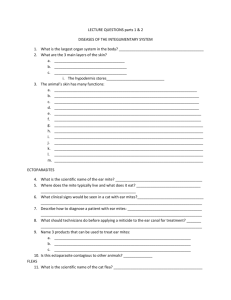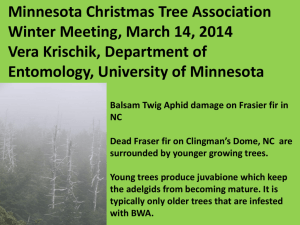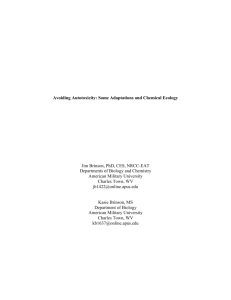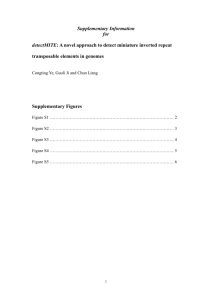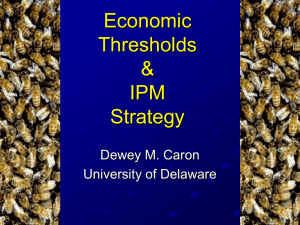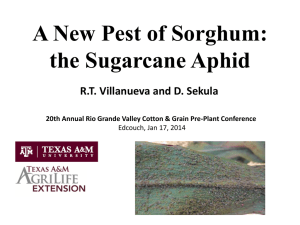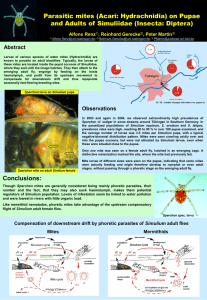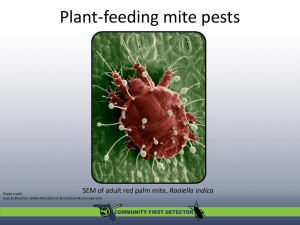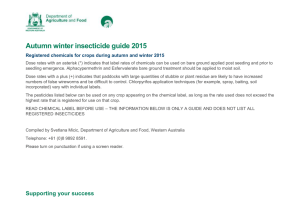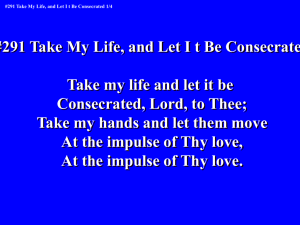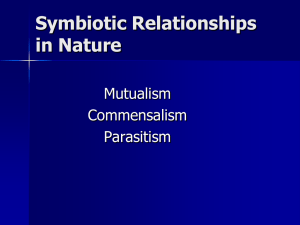The Ten Most Common - Integrated Pest Management
advertisement
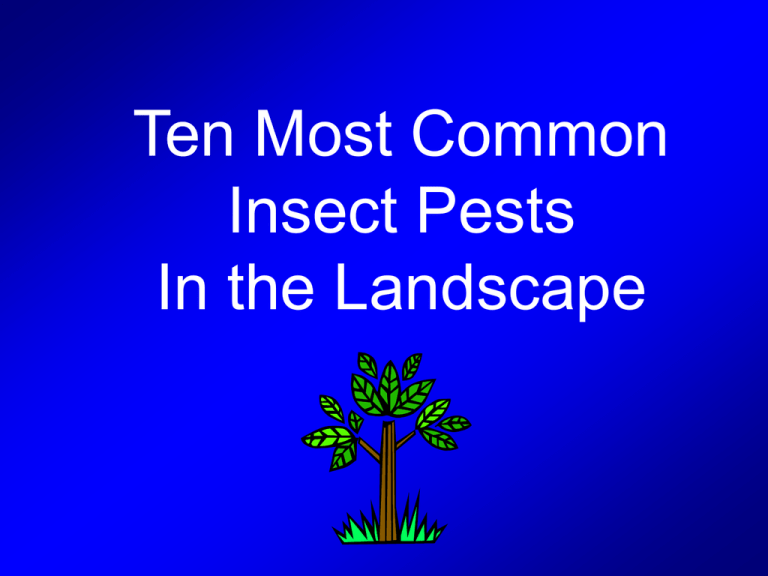
Ten Most Common Insect Pests In the Landscape Aphids Aphids reproduce by giving birth to live young. Populations may increase rapidly. Predators and parasites often lower aphid populations within a short time. Aphid Predators Lady beetles and their larvae feed on aphids, scales and other pests. Lacewing Aphid Parasites Tiny wasps lay their eggs in aphids. The aphids then bloat like the one to the left of the arrow and the wasp develops from within. Aphid Management brush/wash insecticidal soap Malathion Merit horticultural oil Orthene pyrethrins neem Azalea Lace Bug The most frequently reported insect pest in North Carolina landscapes. It feeds on the undersides of leaves causing them to look pale. Azalea Lace Bug Azalea lace bugs overwinter as eggs inside the leaves or as adults during mild winters. Azalea Lace Bug Eggs of azalea lacebugs are inserted into the leaf and then covered with a drop of shiny excrement.This protects eggs from pesticides. underside Lace Bug Management malathion Merit soap Sevin acephate Bagworms By midsummer, bagworms are much more difficult to control. Use a pyrethroid then. Bagworms are the caterpillar of a moth that feeds from within it’s protective bag. Bagworms Bagworms hatch in Spring Each year and are extremely sensitive to pesticides in late April and May. Bagworms By late summer, the bagworms have pupated, and chemical control is no longer effective. Picking off the bags now removes their eggs before next spring’s generation. Bagworm Management Hand picking anytime B.t. (spring) malathion Orthene Sevin pyrethroids Conserve Spruce Spider Mite and Southern Red Mite These mites actively feed during the cool seasons, but damage doesn’t show until summer or winter. Spruce Spider Mite The most frequently reported arthropod pest in NC landscapes. It infests junipers and other conifers such as spruce, fir, cedar and arborvitae. This mite’s egg has the characteristic stipe (thread) projecting from the top. Southern Red Mite Southern red mites infest hollies and other broad-leaf evergreens. Like the spruce spider mite, southern red mites do most of their damage in the fall, and spring. Spider Mite Management horticultural oil insecticidal soap (Treat Spring/late Fall) Oils work well for spider mite control in late fall and spring. Oils also control scale insects and other kinds of mites. summer symptoms Boxwood Leafminer Adult midges (flies) emerge in April. Spraying then should have an impact on the adults. Boxwood Leafminer Discoloration on the top is reveals characteristic blisters on underside of leaves. Boxwood Leafminer Management Orthene and Merit give good control as soil drenches. Armored Scales Tea scale Euonymus scale White peach scale Tea Scale blotching on upper side scale on underside Armored Scale Management Horticultural oils are good sprays for tea scale and other armored scale insects. Best when applied during crawler stage. Tea scale Japanese Beetle It is not practical to try to protect flowers with pesticides. Foliage can be protected with various pesticides. Japanese Beetle Management Japanese beetle grubs live in the soil and are the only white grubs susceptible to milky spore disease. Grub control rarely results in plant protection. Sevin (adult) Neem-Away (adult) pyrethrins (adult) 24Hr Grub Control (grub) Merit (grub) Milky Spore ? (grub) Fall Webworm Oregon State Univ. These hairy caterpillars appear in late summer and Fall. They prefer, persimmon, pecan, and sourwood. Notice that webs are located at the ends of branches, contrasted to tent caterpillars which infest tree crotches during the spring. Fall Webworm Eastern Tent Caterpillar Springcherry, peach, crabapple,etc. Fall Webworm Management If within reach, destroy the web mass with a stick. Otherwise, a pyrethroid, Sevin or other product should give adequate control. B.t. will work only on the early webworms. Fire Ants Mounds have “honeycombed” tunnels. Fire ants prefer to nest in open areas. Fire Ants Painful stings can cause pustules on the skin. Fire Ant Management Amdro (bait) Black Flag (bait) Extinguish (bait) Over ‘n Out (bait) Come/Get It (bait) Sevin or Orthene mound drench (except sensitive areas) Bayer Adv. FAK Many others Insect notes are excellent references. Pest Control Calendars http://insects.ncsu.edu Photo creditsJames Baker, NCSU Jack Kelly Clark Oregon State Univ. USDA ARS UC Davis Prepared by Stephen B. Bambara Extension Entomologist 11/05
